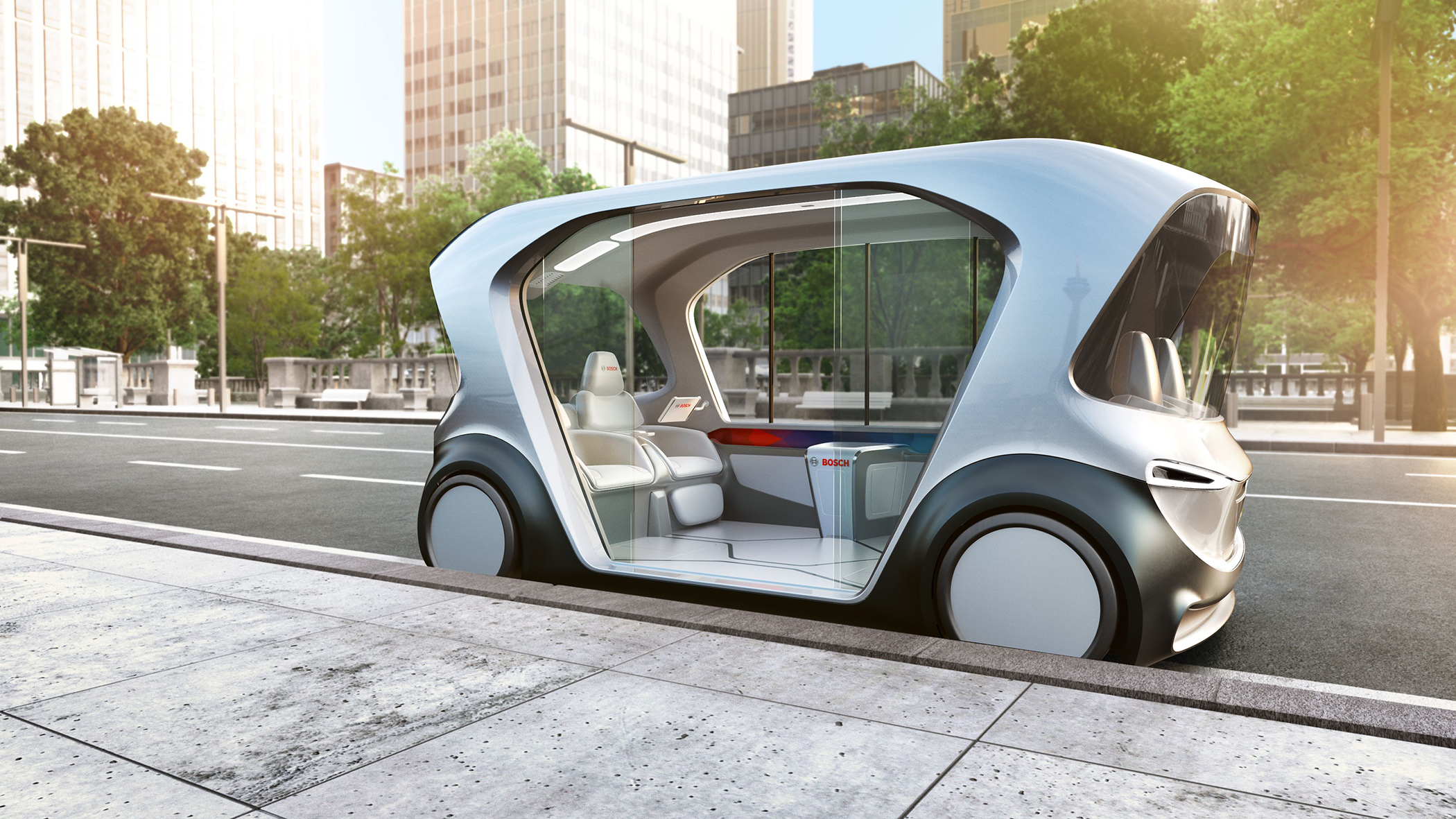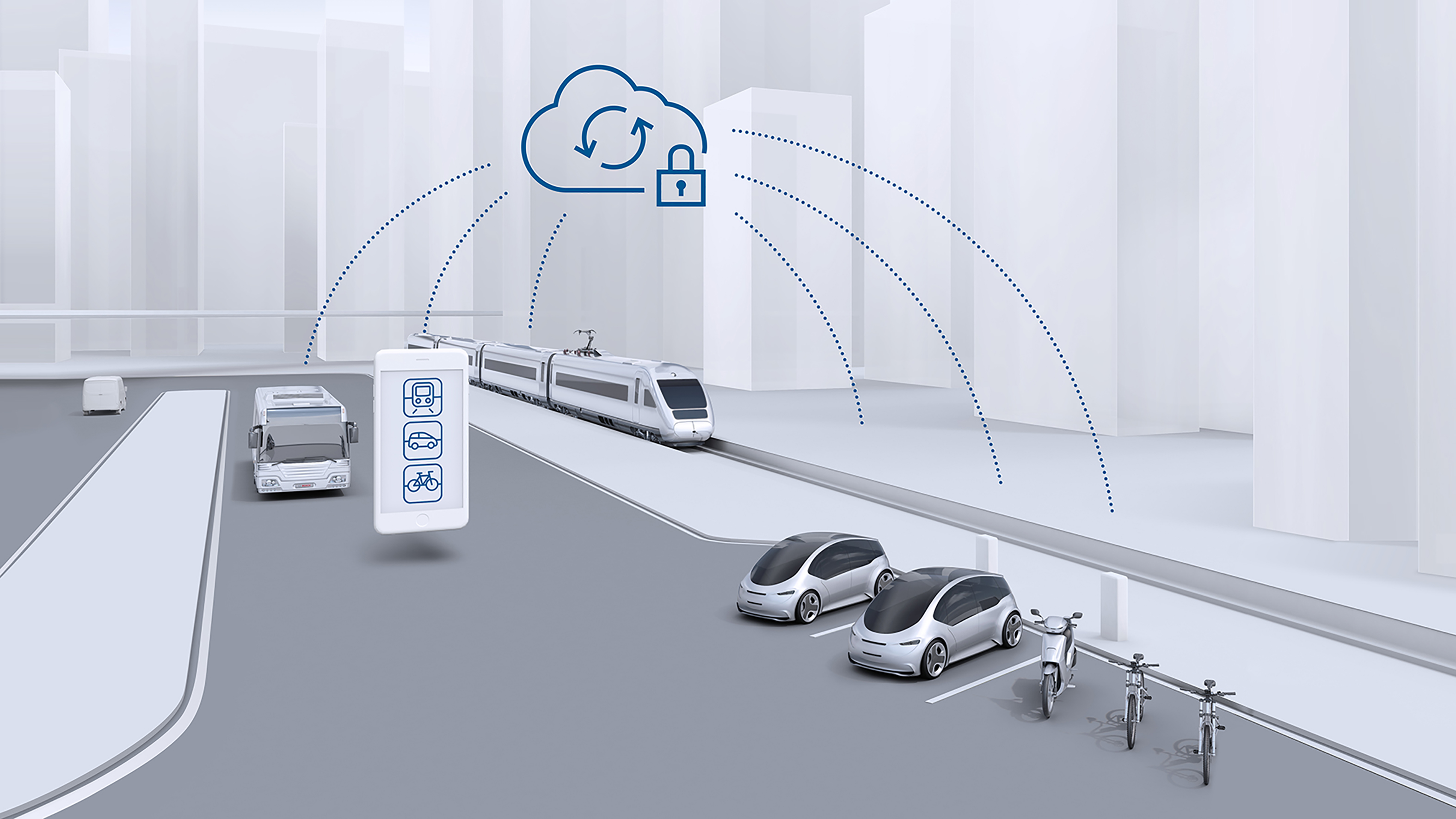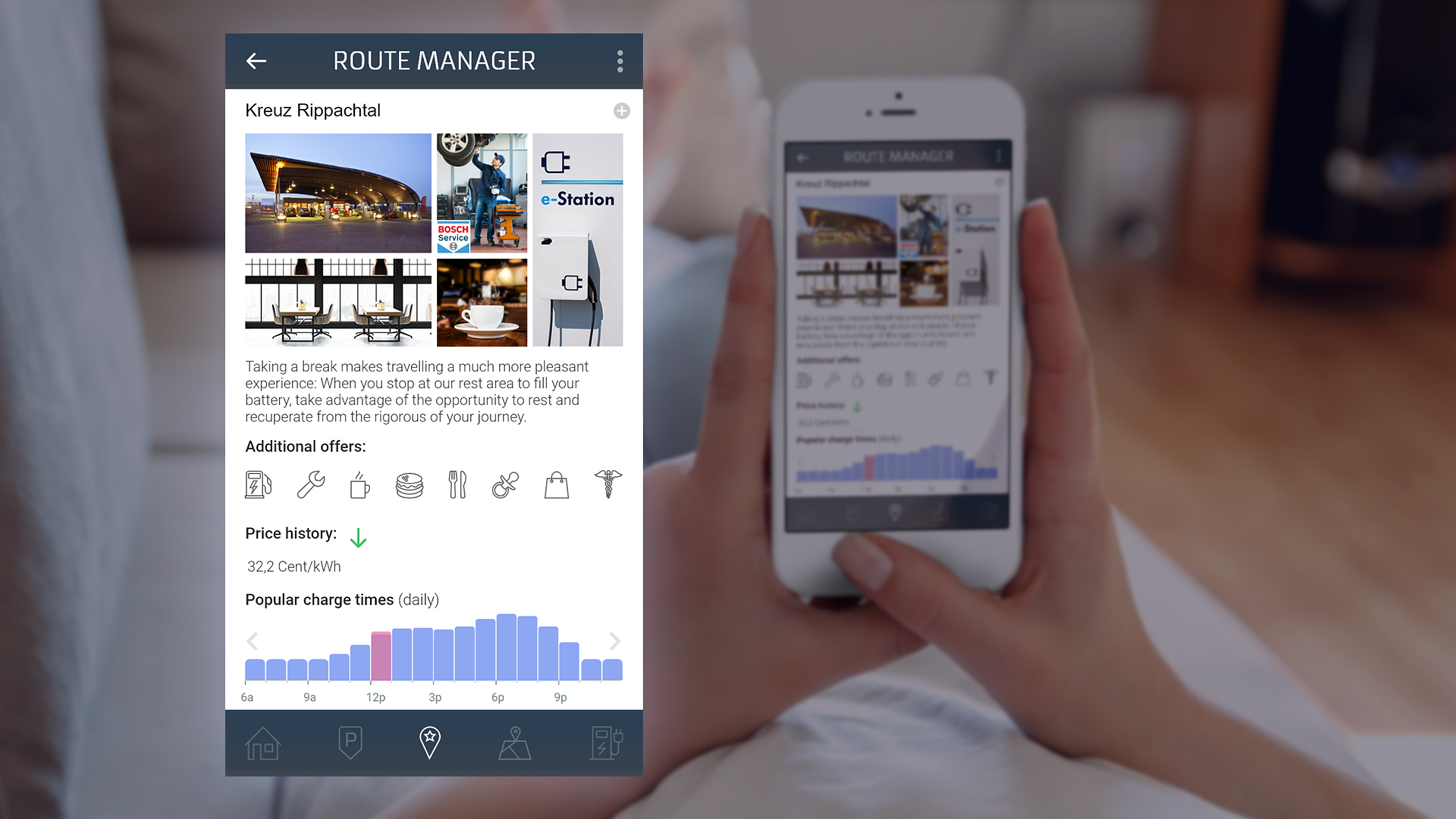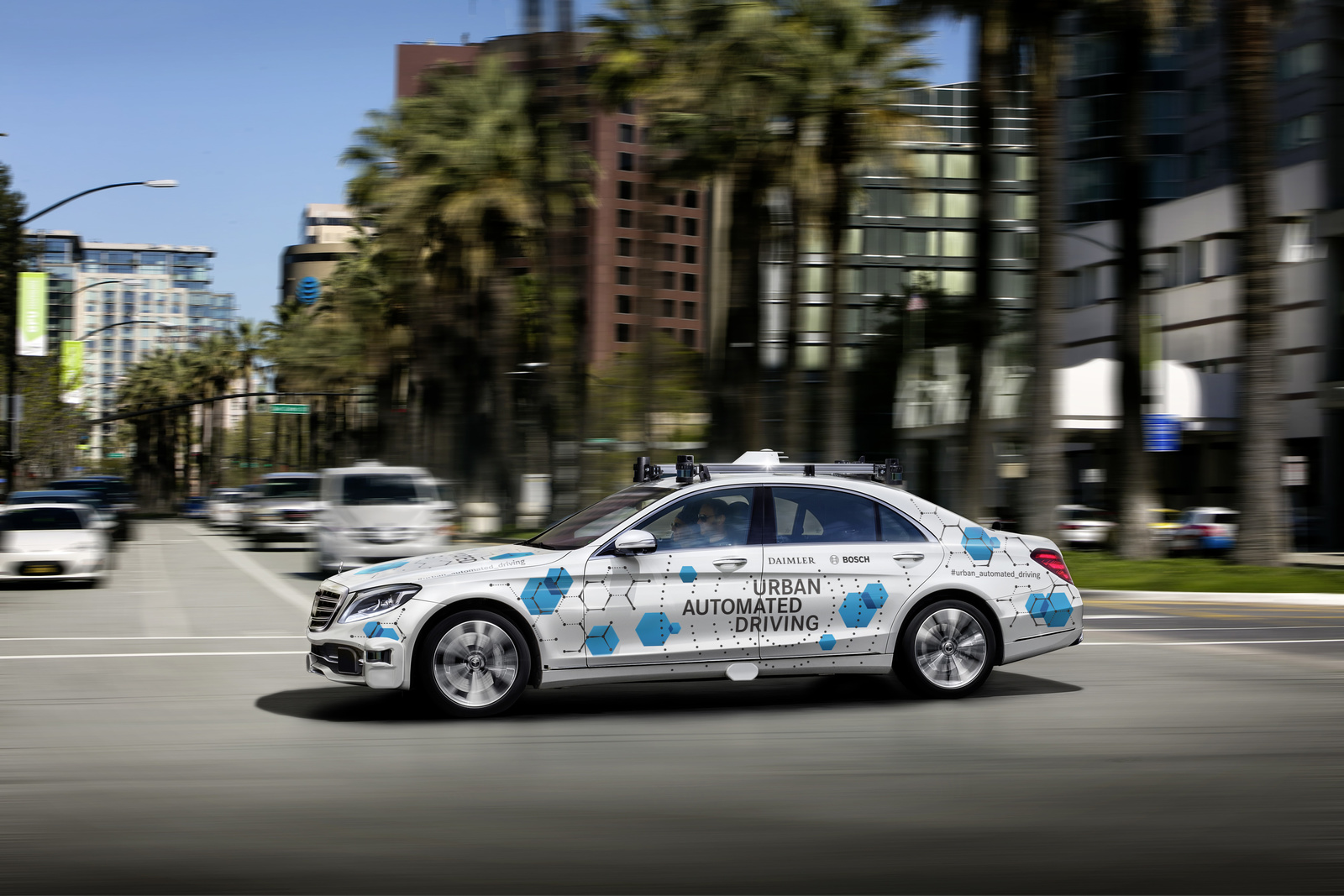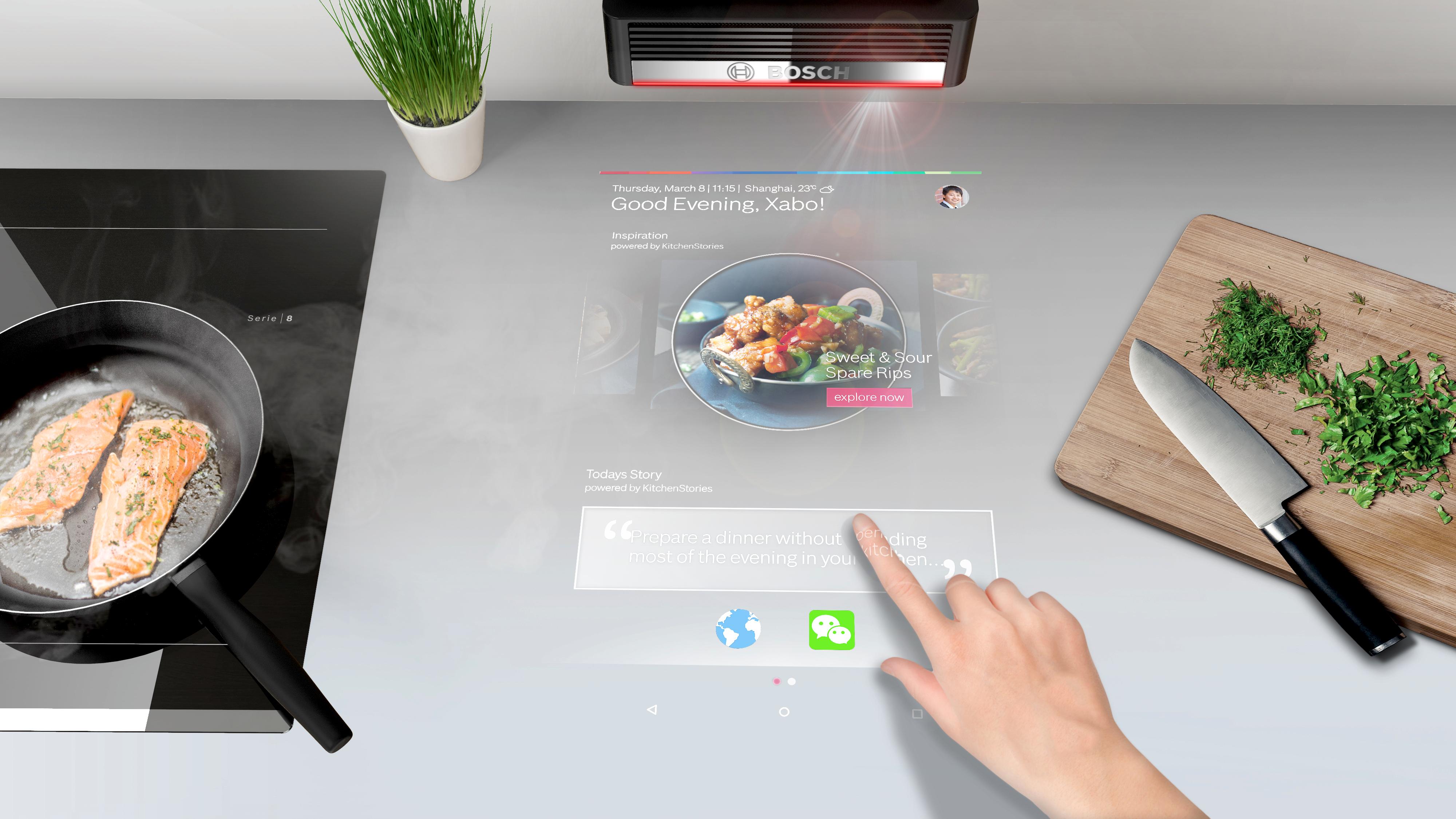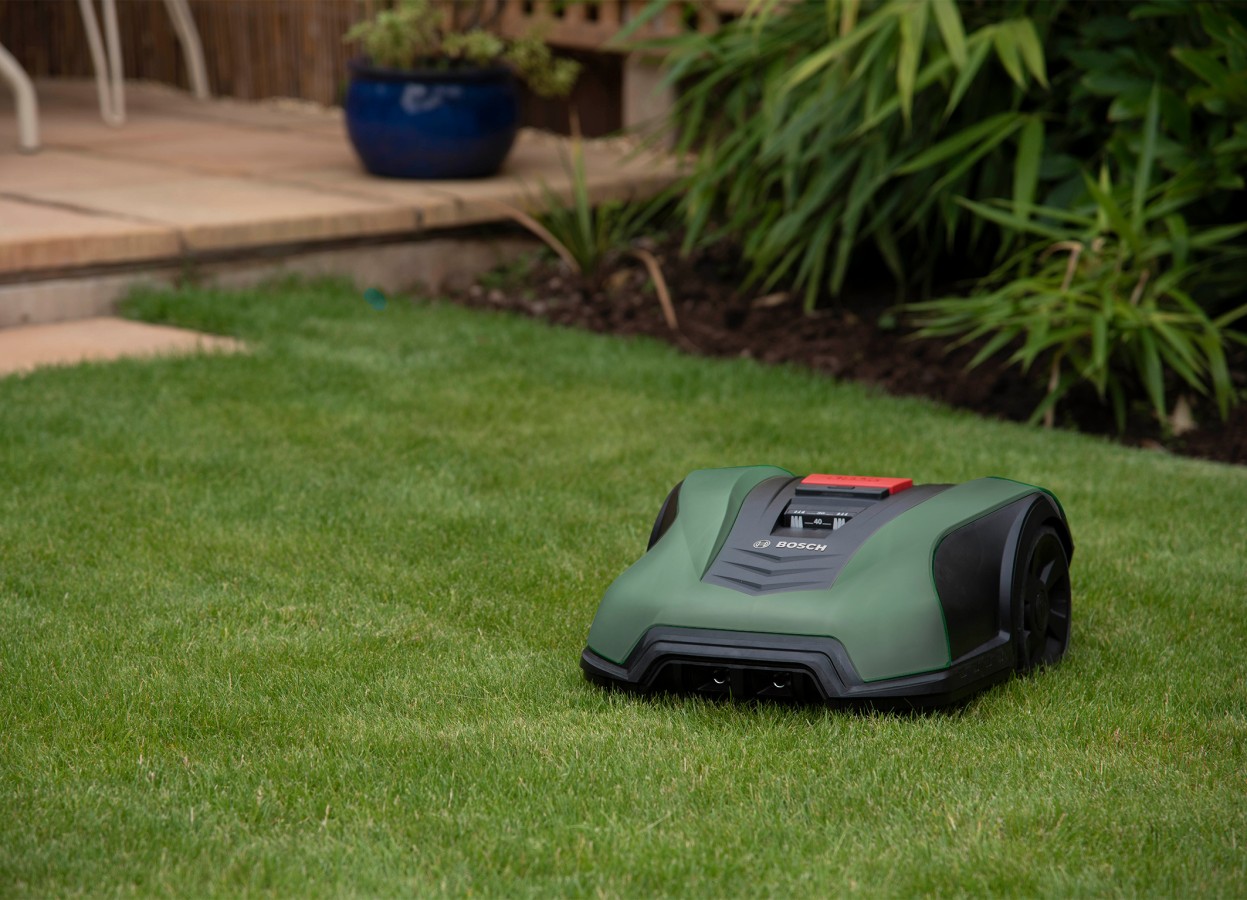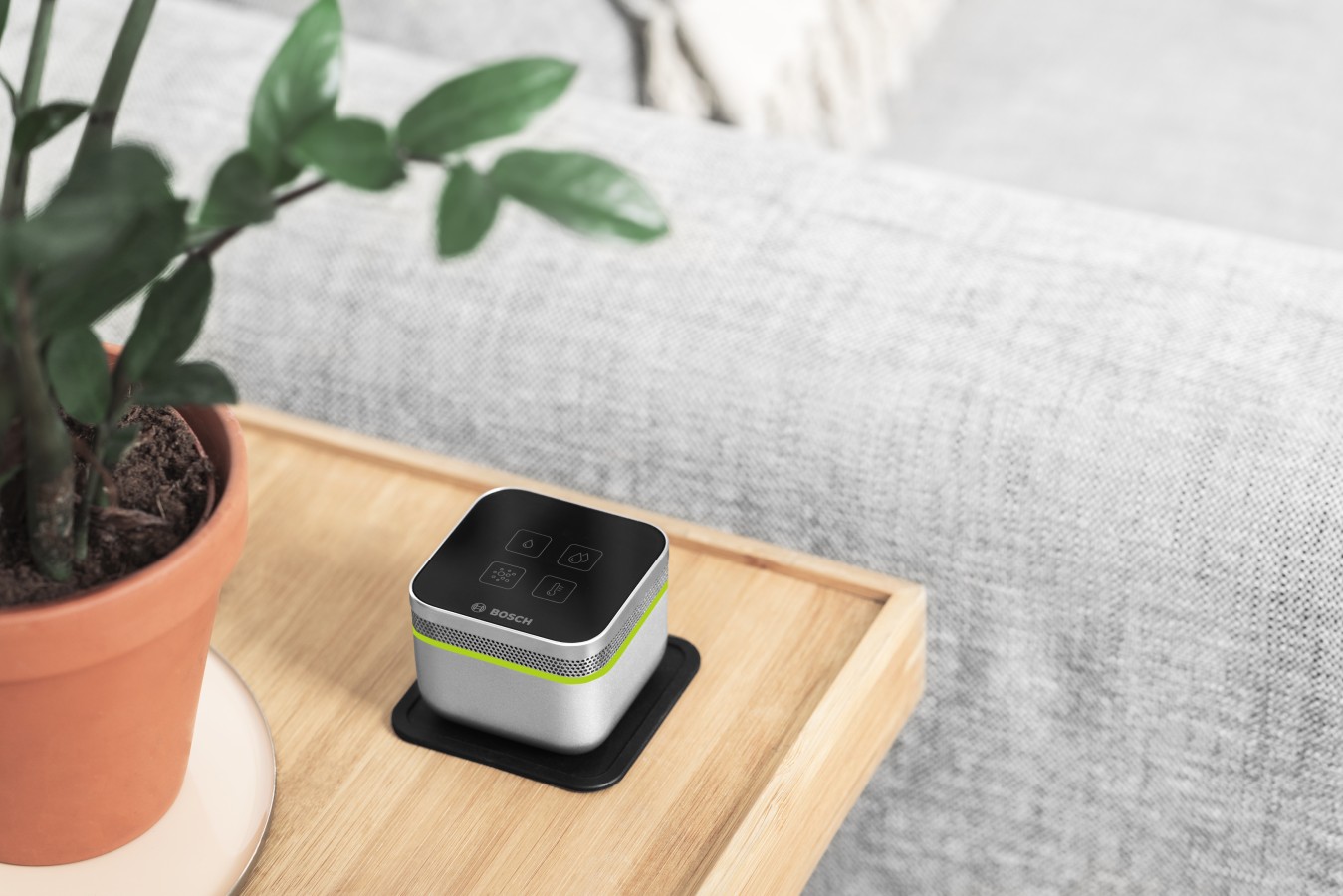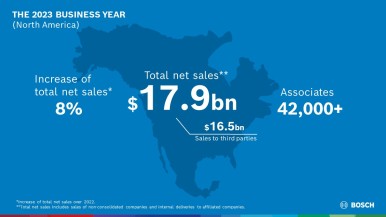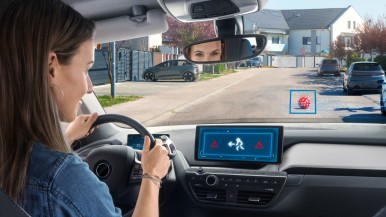CES Innovation Awards: a total of six honorees for Bosch
In the run-up to CES 2019, Bosch received a total of six CES Innovation Awards. The CES Innovation Awards are an annual program run by the Consumer Technology Association (CTA) covering 28 categories, and serve as an indicator of future trends. This year, awards went to the following Bosch products and solutions:
1. All-in-one principle for vehicle connectivity:
For the future of connected, automated driving, vehicles need the ability to communicate smoothly both among themselves and with their environment. To this end, Bosch has developed a universal connectivity unit for all Wi-Fi-based and wireless-based transmission technologies used in vehicle-to-everything (V2X) communication. This enables vehicles to communicate with each other and with traffic infrastructure, regardless of the country or manufacturer. Software produced by the Portuguese startup Veniam handles the complex task of managing the data connections. It constantly searches for the best transmission technology for each requirement and switches automatically between the available options.
2. Trucks with no exterior mirror:
The new Mercedes-Benz Actros is the first production truck to feature a camera system in place of conventional main and wide-angle mirrors. Known as Mirror Cam, this system offers better 360-degree vision. In addition to increasing safety, having compact digital cameras instead of mirrors improves the truck’s fuel consumption thanks to the cameras’ considerable aerodynamic advantages. Two cameras, fitted left and right on the roof of the driver’s cab, feed real-time images to two high-resolution 15-inch displays mounted on the A-pillars inside the cab. The system adjusts the monitor display to match the driving situation. Overall, Mirror Cam greatly improves the truck’s aerodynamics, safety, and vehicle handling. Daimler’s development partners for the Mirror Cam system are Bosch and Mekra Lang.
3. The smartphone as car key:
The Bosch Perfectly Keyless access system will soon let car drivers, car-sharing fleet operators, and logistics companies manage their vehicle keys digitally. They can use a smartphone app to decide at any given time who should have access to cars or trucks and when. The ingenious feature of this Bosch system is that it makes the connection between smartphone and vehicle more secure than ever. Perfectly Keyless can pinpoint the authorized smartphone like a digital fingerprint. For CES 2019, Bosch has installed the system in a demonstration vehicle based on a Ford Mustang.
4. Radar-based assistance systems prevent motorcycle accidents:
Blind-spot detection, collision warning, and adaptive cruise control: giving motorcycles radar as a sensory organ enables new motorcycle assistance and safety functions while providing an accurate picture of the vehicle’s surroundings. As a result, these assistance functions not only increase safety, they also enhance enjoyment and convenience by making life easier for riders. According to Bosch accident research estimates, radar-based assistance systems could prevent one in seven motorcycle accidents. These electronic assistants are always vigilant and, in emergencies, they respond more quickly than people can. They are based on a combination of radar sensor, brake system, engine management, and HMI.
5. App for connecting e-scooters:
A new app turns e-scooters into connectivity pros. As well as displaying key information such as the e-scooter’s current battery charge, it allows rider-vehicle communication and the option to connect with other users via social networks. This makes it easy for users to find out which of their friends are in the area. In addition, there is a connected helmet holder on the e-scooter’s handlebar which is controlled by app. Whenever the e-scooter is parked, this provides a storage solution for the helmet while also protecting the vehicle against theft and its display against vandalism.
6. Retrofit solution for more efficient machinery and households:
Bosch has developed the Phantom algorithm to help small and medium-sized enterprises assess and greatly increase the energy efficiency of their machinery. This retrofit solution, which takes just a few minutes to install, uses sensors to measure the load on each device in the customer’s energy consumption network to provide valuable insights into usage and potential faults. This enables users to improve the machinery’s operations and efficiency. In homes, too, Bosch Phantom can tell how much power each device is using. This energy transparency makes it possible to save electricity.
Mobility of the future: selection of solutions and services
Driving electric, yet stress-free – that is the goal of Convenience Charging, the Bosch service that the company is presenting at CES 2019 in a demonstration vehicle based on an Audi A3 e-tron. This integrated charging and navigation solution enhances the everyday benefits of electromobility. In the future, the service will tell electric cars precisely when their power will run out, but also where they can find the next charge spot. To this end, Convenience Charging combines information from the electric powertrain with both vehicle and environment data to produce a reliable range forecast. The service uses state-of-the-art route planning to determine charging opportunities based on the driver’s personal preferences. In the future, drivers of electric cars will be able to order food for delivery directly to their pre-booked charge spot, so they can make the best use of the charging time. Using the Convenience Charging app, drivers will also be able to plan the charging stops they need in the comfort of their own home, with the app then seamlessly transmitting the suggested routes between charge spots to the vehicle.
Safe use of cell phones when driving:
The mySPIN smartphone integration solution makes it safe for drivers to use smartphone apps while they are on the road. Now, mySPIN also supports the MirrorLink vehicle communication standard. In the future, it will take just a simple adapter for the vehicle’s infotainment system or instrument cluster to enlarge mySPIN-compatible apps and display a reduced set of their key functions. Drivers will then be able to operate the apps by touch or using the vehicle’s rotary push button. Bosch is also developing mySPIN smartphone integration for commercial vehicles, motorcycles, scooters, and powersports vehicles.
Lifesavers from the data cloud:
In Germany alone, some 2,000 warnings about wrong-way drivers are broadcast each year. In most cases, however, the warning comes too late, since such incidents generally end after an average of 500 meters – in the worst case with fatal consequences. Bosch has developed a cloud-based solution that sends a warning to wrong-way drivers and all road users at risk within ten seconds. Some 15 radio and navigation apps already use Bosch wrong-way driver warning technology to reach people in 13 European countries. The service relies on a software module for integration into existing infotainment systems and apps.
Making the electronic horizon even more accurate:
Today, the electronic horizon provides data on road inclines and the sharpness of bends to complement navigation data. Because the system enables vehicles to think ahead, it enhances both safety and convenience. Bosch is now working on the next-generation electronic horizon, which will be even more accurate and up to date. In addition to information on road classifications, bends, and vertical profiles, it will provide vehicle systems and navigation systems with geometries for each and every traffic lane as well as infrastructure data with 3D objects. This will help automated vehicles determine their precise location within the lane.
A seat-of-the-pants feel for automated vehicles:
Bosch predictive road-condition services will allow self-driving vehicles to determine how road conditions will develop over the course of a journey, based on weather data provided by the company’s partner Foreca. As a sufficient number of connected vehicles take to the roads, Bosch will supplement its predictive road-condition services with vehicle data. This will increase the safety, availability, and convenience of automated driving functions.
Automated driving in cities:
San José in California’s Silicon Valley is set to become the pilot city for an automated ridesharing service provided by Bosch and Daimler. The three parties have already signed a letter of intent to this effect. Bosch and Daimler plan to offer the app-based service with automated Mercedes-Benz S class vehicles to selected customers. The test area is centered on the San Carlos Street / Stevens Creek Boulevard traffic artery between Downtown and West San José. Bosch and Daimler are working together on solutions for automated driving in cities. Their aim is to develop a driving system for fully automated driverless driving (SAE level 4/5) that is ready for production by the beginning of the next decade.
Integrated security solution for connected vehicles:
Since April 2018, all newly registered vehicles are automatically connected vehicles – thanks to the automatic Emergency Call system. This makes it increasingly important to have integrated security concepts for connected vehicles. At CES, ESCRYPT will be presenting CycurACCESS, a security solution for keyless vehicle access systems. State-of-the-art cryptographic methods make these digital keys particularly secure. What’s more, the Bosch subsidiary is presenting an all-in-one solution for secure over-the-air software updates, Featuring efficient key and certificate management to guarantee end-to-end encryption from the car’s ECU to the vehicle manufacturer’s IT systems.
Intelligent assistants: solutions for the smart home
Food recognition for smart storage:
Connected devices offer their owners tangible benefits both on the road and at home – for instance when it comes to optimizing how food is stored. Now, Bosch connected refrigerators with interior cameras offer a new function: food recognition with storage recommendations. The device automatically recognizes some 60 kinds of fruits and vegetables and suggests the ideal place to store them via an app. By storing food in the best possible way, it stays fresh for longer and doesn’t have to be thrown away so often.
Cooking without sticky touchscreens:
PAI is a Bosch projector that is mounted over the kitchen counter, turning the whole worktop into a touchscreen. An integrated 3D sensor records when users touch the surface, making touch control possible. That means users can access a wide variety of digital services while cooking or baking, for instance to pull up recipes with ease or control connected appliances. Thanks to its robust design, the PAI’s interface is easy to operate even with greasy fingers, unlike conventional smartphones or tablets. This approach also frees up space on the work surface.
Easy lawn care thanks to artificial intelligence:
Bosch is using machine learning to improve the way its Indego robot lawn mower recognizes obstacles on the lawn by evaluating data such as motor flow, acceleration, motor speed, and direction. Thanks to AI, Bosch is making lawn care even easier and more convenient by enabling the Indego to take over the chore of mowing. Each Indego adapts to its garden in order to mow it perfectly every time. And Bosch’s new connected Indego S+ opens up new possibilities for users. It now supports voice control via Amazon Alexa, making it one of the first robot lawn mowers on the market to offer this function.
Turning shelves into personal assistants:
The new BML100PI interactive projection module lets users create smart shelves in their closets or wardrobes. A single module projects touchscreen functions onto the surface of as many as six shelves at a time. These projections enable a wardrobe to display weather forecasts, an individual’s daily schedule, or reminders of upcoming events. This information forms the basis for daily outfit suggestions, which users can share on social media. Once clothing has disappeared from the shelves, users can use the virtual touchscreen to place an online order for something new or make an appointment with the laundry service. The interactive projection module turns any standard shelf into a personal assistant to make everyday life more convenient.
Recognizing every movement:
The new BMI270 sensor is an intelligent inertial measurement unit (IMU) sensor with extremely low energy consumption which was designed for use in wearable electronic devices. The BMI270 improves the functionality of these wearables, including step counting and gesture recognition, and can distinguish between different activities, such as standing, walking, running, or cycling, in addition to detecting the transition from one activity to another. It can also detect where activities are taking place – for instance, whether it is inside a vehicle. What’s more, the new sensor can detect movements such as bending or raising the arm and tilting the wrist, making it possible to operate wearables with intuitive gestures. The gesture recognition is fully compatible with the wearables operating system Wear OS from Google. The IMU’s high level of performance is the result of combining yaw-rate sensor technology used extensively in automotive applications with a significantly improved acceleration sensor.
Getting to grips with the interior climate:
The AIR well-being sensor offers innovative climate comfort for the home. It records and presents information on air quality, temperature, and humidity, as well as brightness and noise. Users can operate the well-being sensor even without a smartphone thanks to its easy-to-understand interface featuring traffic-light logic. In addition, the Bosch AIR app offers more detailed information about measurements over time and enables users to tailor the sensor’s settings. By offering specific recommendations for how to improve indoor air quality and achieve a healthy interior climate, AIR helps people perform, concentrate, and feel better.
Voice control for heating systems:
The .aino chatbot lets users communicate with their heating system using plain language. Typing or saying “I feel cold” instructs the system to increase the room’s temperature by two degrees Celsius. In addition, the chatbot even understands the difference between “a little cold” and “very cold,” expressing that as different degrees of temperature change. The system also provides useful energy-saving tips, for instance based on the weather forecast, and suggests how to improve the efficiency of the heating system. On request, .aino sends weekly or monthly reports of energy consumption including a year-on-year comparison.
Bosch at CES 2019
- PRESS CONFERENCE: Monday, January 7, 2019, from 9:00 to 9:45 a.m. local time, in the Mandalay Bay Hotel, Las Vegas South Convention Center, Level 2, Ballrooms B, C, and D
- BOOTH: Tuesday to Friday, January 8–11, 2019, in the Central Hall, #14020
- FOLLOW the Bosch CES 2019 highlights on Twitter: #BoschCES
- PANELS WITH BOSCH EXPERTS:
- Wednesday, January 9, 2019, 9:00 – 10:00 a.m. (local time)
“Connected Home Innovations” with Anne Rucker, global head of digital strategy, Venetian, Level 4 Marcello 4405 - Wednesday, January 9, 2019, 9:00 – 10:00 a.m. (local time)
“Technology, Jobs, and the Future of Work” with Charlie Ackerman, senior vice president of human resources North America, Las Vegas Convention Center, North Hall N258 - Wednesday, January 9, 2019, 2:15 – 3:15 p.m. (local time)
“IoT to the Max, Thanks to 5G” with Davie Sweis, vice president of web business, Las Vegas Convention Center, North Hall N256




